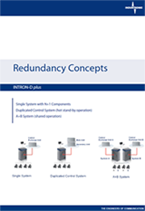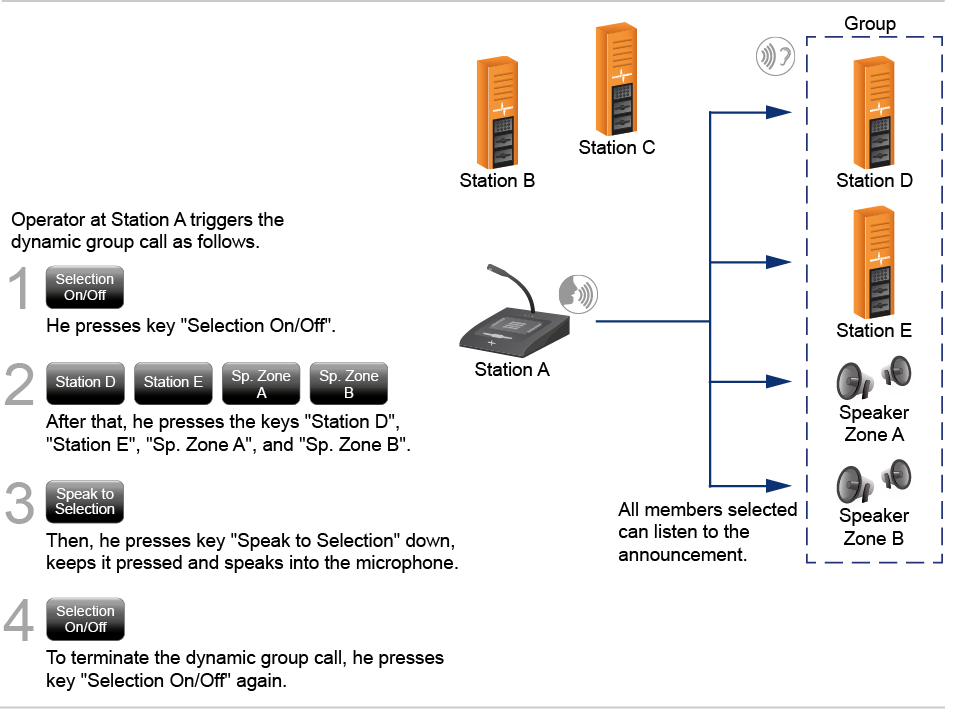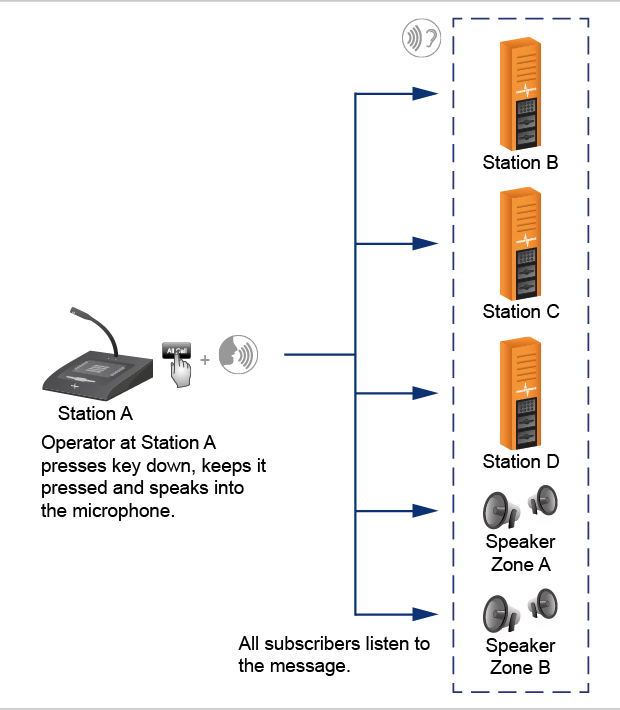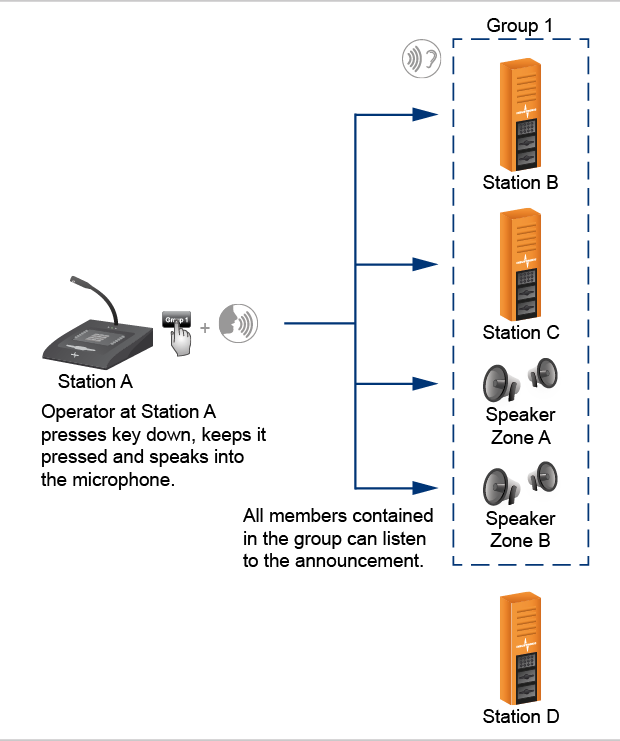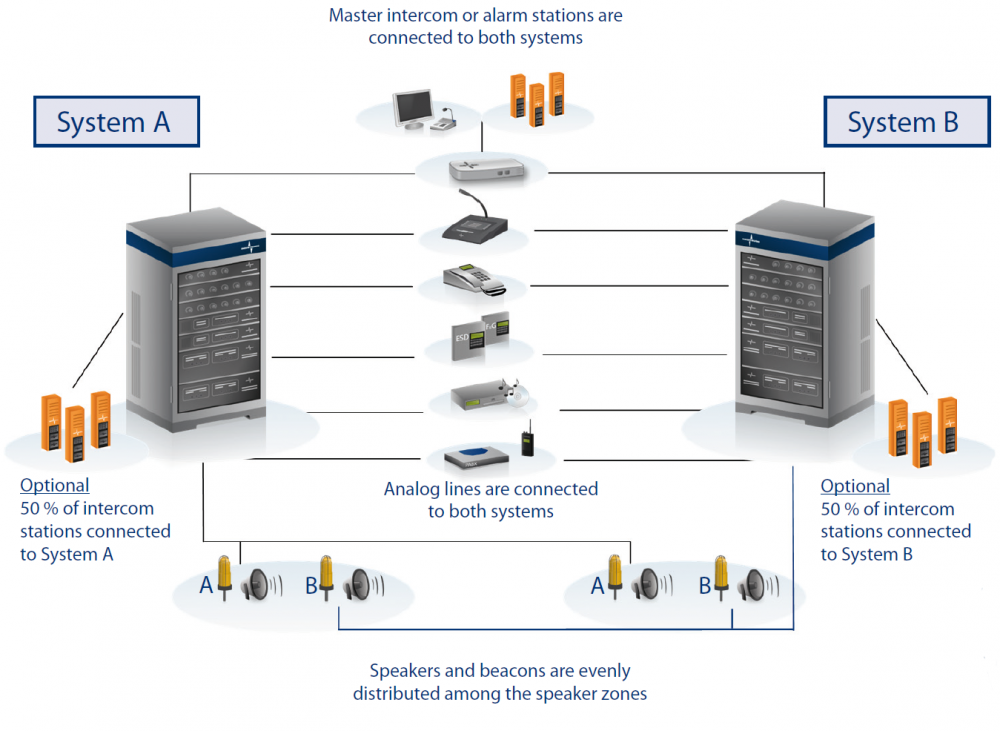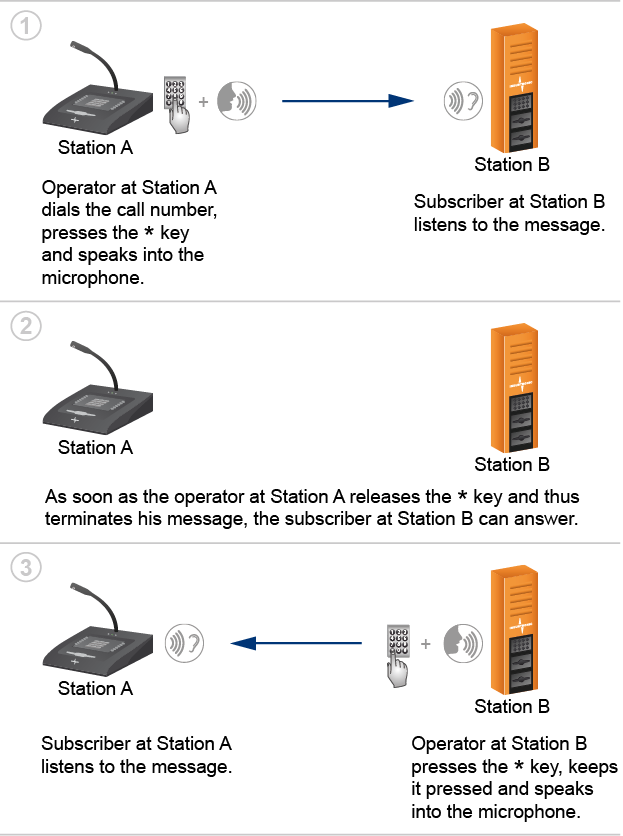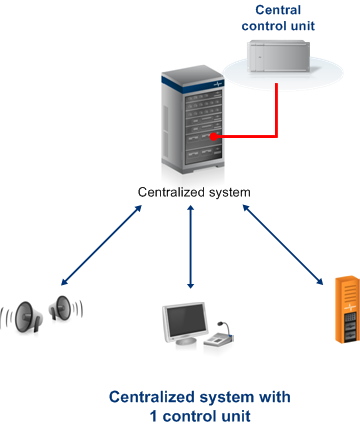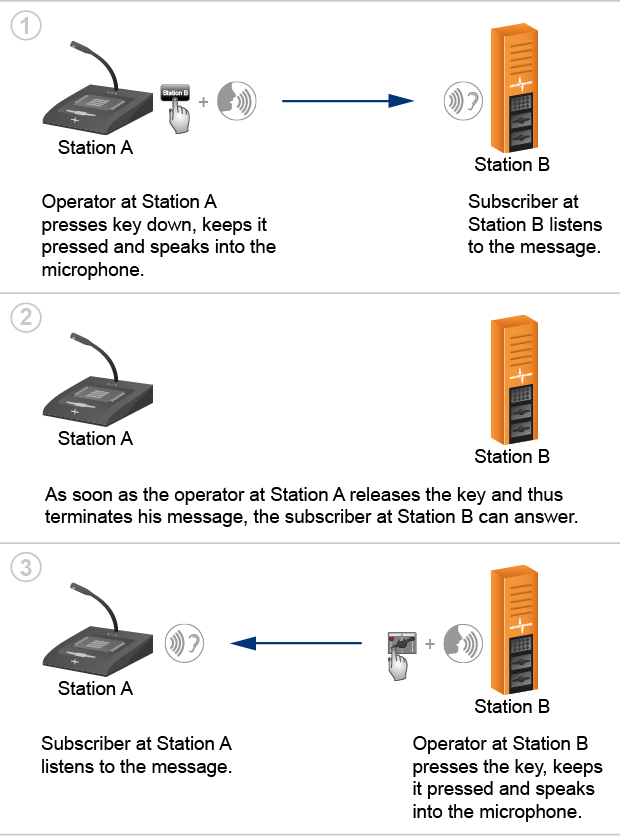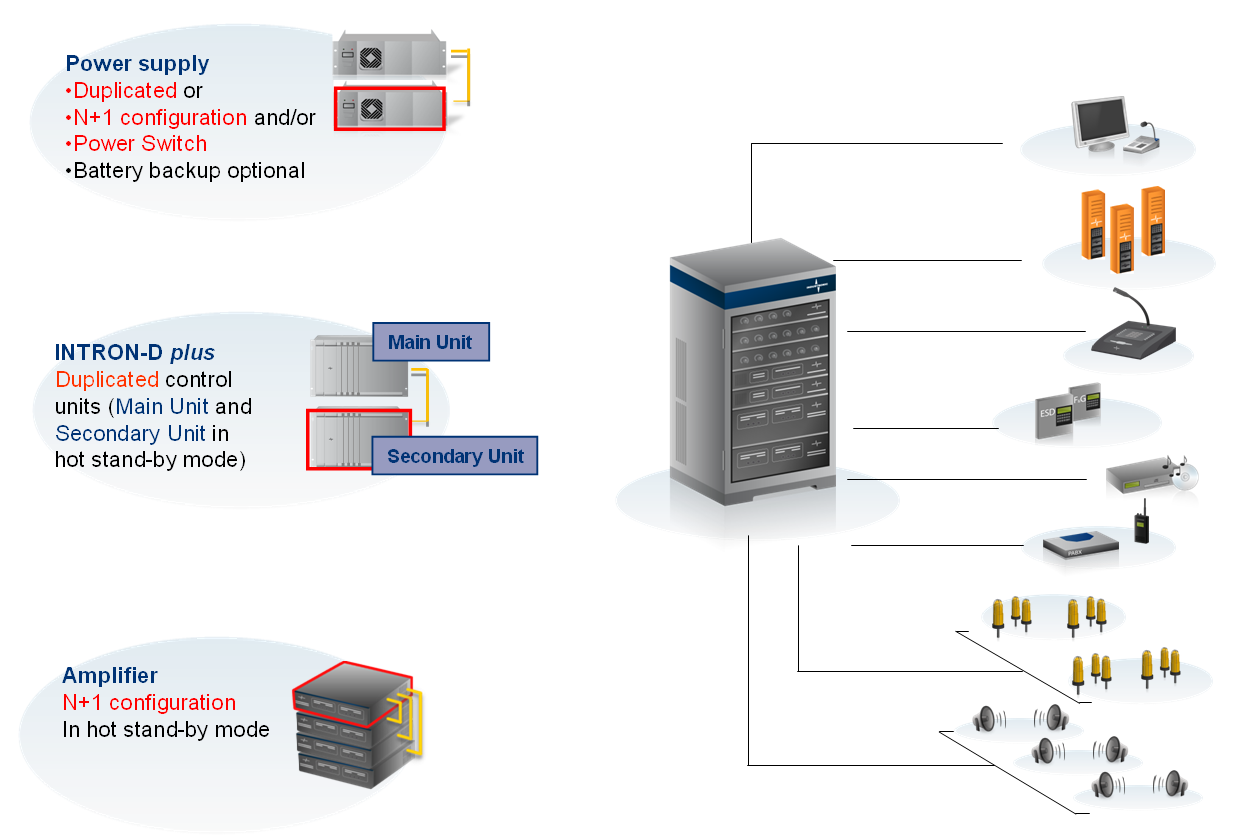INDUSTRONIC is pleased to announce the publication of the new marketing brochure on redundancy concepts. This document provides all the details about the individual redundancy concepts already introduced in my recent blog posts right at your fingertips. Find out how they work, for which types of applications they are typically used, and of course what the […]
Today´s topic of INDUSTRONIC functions is the “Dynamic Group Call” which allows to establish a call to a freely selectable group of members. One Subscriber Speaks – All Selected Members Listen A dynamic group call provides communication in one direction (unidirectional) where one subscriber speaks and all selected members of the group listen simultaneously (Point-to-Multipoint […]
Today´s topic in my series of INDUSTRONIC functions is the “All Call” which allows to establish a call to all employees in your facility. One Subscriber Speaks – the Others Listen An all call provides communication in one direction (unidirectional) where one subscriber speaks and all others listen simultaneously (Point-to-Multipoint connection). Subscribers and targets can […]
In my last two blog articles I described different ways of bidirectional communication. This time I would like to give you an insight into a unidirectional communication method where a call is established to a pre-defined group of members – the group call. One Subscriber Speaks – the Others Listen For a group call, one […]
Today, I want to introduce you to the A+B System (shared operation) which is a typical redundancy concept for onshore/offshore applications with increased safety requirements. It complies with DNV and NORSOK standards. For this redundancy concept two independent systems work simultaneously (System A & System B). Often they are located in two different places so […]
After already introducing you to the function “Direct Two-way Communication” in my last blog article, I would like to continue with my series on INDUSTRONIC functions. Today’s topic is “Dynamic Two-way Communication” which allows establishing a voice connection to any desired subscriber by using a dial keypad. Furthermore, keys can be saved and the intercom […]
A post by our colleague Roland Leuthe, Head of Development “Systems Software” In one of our previous blog posts (“Centralized vs. Decentralized System Architecture”) we mentioned that complex functions or the connection of external interfaces cannot reliably be implemented when using a completely decentralized system architecture. However, the major drawback of one centralized control unit […]
From unidirectional voice announcements through to conferences with several subscribers – communication and public address systems provide a wide range of functions. For you to gain an insight into the possibilities of such systems I would like to use this blog to introduce you to different functions in the coming weeks and months. This week […]
The topic of today’s blog post is the Duplicated Control System (hot stand-by operation), another basic system redundancy concept. Please refer to the previous articles about this topic: “Introducing INDUSTRONIC’s Redundancy Concepts” and “INDUSTRONIC’s Redundancy Concepts – Single System with N+1 Components” if you need more background information before reading this post. The Duplicated Control […]
Standards – Which Standards? As you might remember in the 80s and the early 90s there were so many standards as nearly every company created their own ‘standards’ and ‘standard interfaces’. The reason was that the computer and communication technology was on an upswing in this era, everyone involved tried to sell his idea of […]
